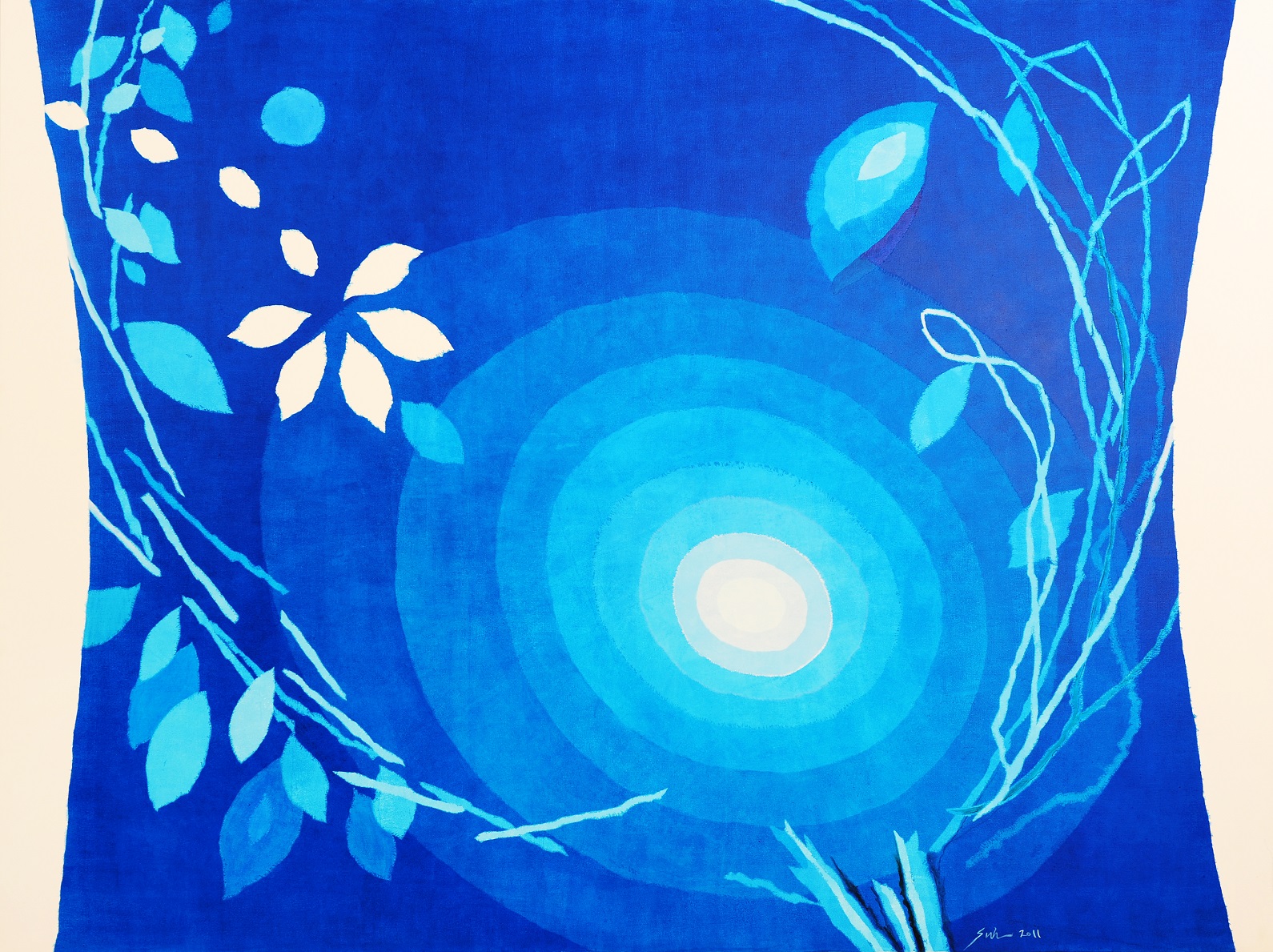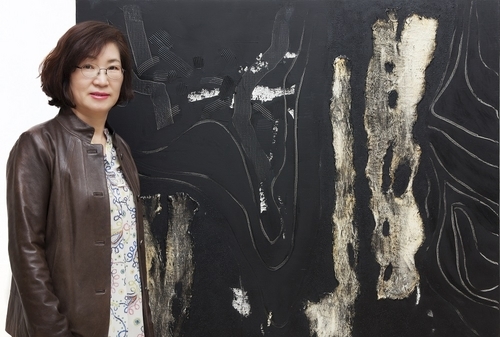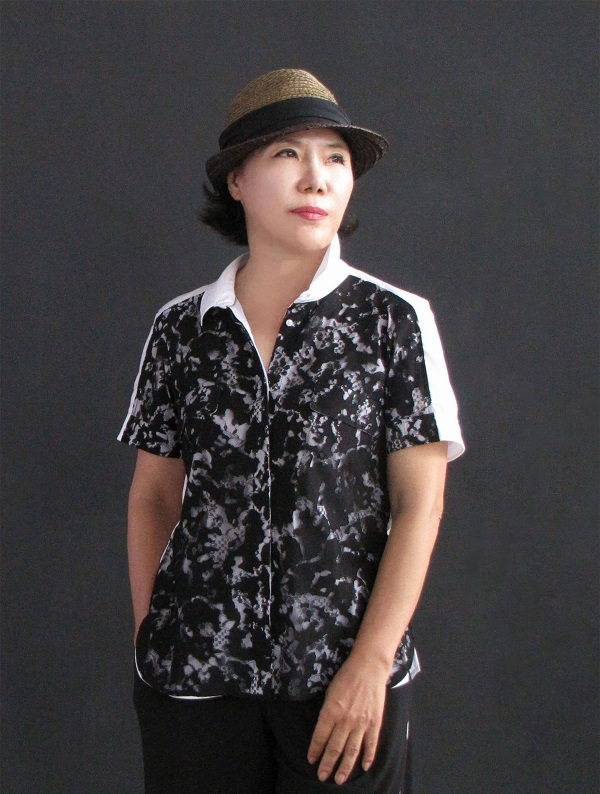[권동철의 화가탐방]화가 조향숙‥creation and emptying[Thoughts on the woodcut of Jo Hyang Sook,임영길 평론⑤,Jo Hyang Sook Painter,조향숙 작가,Yim Young Kil Art Critic]
 |
도판(fig)14-뭉크의 목판화, 절규. 제공=임영길.
In Korea, we have traditionally used hard, relatively few knots and fine-grained trees such as pear, birch, white birch, ginkgo, cherry, and Korean linden in woodcut. Woodcut is a medium that accepts and expresses the world through the matrix of tree. Trees form rings as accumulations of time and experience that have grown with seasonal and climatic changes. This resembles a mind formed against the changes in the world in which humans live.
The trees are a medium capable of expressing not only the sensibility of nature, but also the frustrations and wounds of human history, and the traces of happy moments by adding direct physical experience in the process of engraving and carving done by the artist to its rough and uneven surface.
In this way, trees are “grown” by the ground, sunlight, and water (water grows trees), but trees are completed from “being controlled” by metal, which is a woodcut knife (metal controls tree). If you apply force to the woodblock according to your sketch with a variety of woodcut knives, it triggers resistance on the body from the friction caused by the solidity of the wood grain. In addition, it is possible to express the artist's emotions richly while simultaneously feeling the sound of carving plates, a fine smell, and a visual sense along with the body's pulse and the rhythm of breathing. In this process of plate making, the plate is formed by being 'emptiness' and 'creation' at the same time.
The images that appear like this have the vitality of nature, and are simple yet intense. Woodcut is a medium in which the senses of body and mind form a flexible relationship, starting with the senses at the fingertips that goes up to the spirit. Edvard Munch produced a same image both with oil painting and with woodcut. In my opinion, this was to completely erupt of the emotions that were not sufficiently resolved in oil paintings through woodcut.(fig. 14)
He attempted to leave his memory by engraving and imprinting on woodblocks that could not be resolved with oil painting materials. The soft sensation of oil painting using materials such as brushes and oil paints has been transformed into the physical properties of woodcut in which hard surfaces are cut with sharp knives, resulting in more intense expression.
Jo Hyang Sook also performs Korean painting in parallel with woodcut. I believe she must have been able to directly express her inner feelings of happy, joyful, or painful memories that were unable to be resolved by Korean painting through the act of emptying the woodblocks. The intense and expressive characteristics of woodcut must have made the artist's inner world more vividly visible. Woodcut is an ultimate stimulus to the artist, leaving traces of art through empathy and expression. Through these acts, the artist can confirm the possibility that she can be reflected as a positive reason for life and as a trace of art.
A media is closely related to the cultural and social conditions of the time it was born. Traditional woodcut in Korea mainly expressed the view of Buddhism throughout the Three Kingdoms and Goryeo dynasty. Woodcut at that time spreaded the idea of Buddhism by engraving and printing the Buddhist system of thought on wood. Therefore, woodcut is a suitable media for transferring Buddhism, the great heritage from that era, to the present. Buddhism teaches that one must escape from his/her idea about the others, and that unhappiness and happiness are not separate from each other.
Through the act of removing her ideas that make her unhappy, the artist must be realizing the image of happiness as much as the scraps of engraving deleted. In this way, Jo Hyang Sook's woodcut prints reflect ideas of the East Asia. Her woodcuts realize a creative eros formed through a new formative interpretation of traditional ideas of East Asia like Taoism’s ‘Yu-mu-sang-saeng’, which means that 'creation' is only completed by ‘emptying’, the idea from ‘Myeonglihak; four pillars of destiny’ that completion comes from 'being controlled' rather than 'being grown' (from “water grows trees” to “metal controls tree”), and the teachings from Buddhism on the way to meet Tathata through selflessness and the idea that happiness and unhappiness are not separate.
This seems to be very meaningful in a situation where Koreans value and follow Western ideas, while the West shows interest in Eastern ideas. In this way, Jo Hyang Sook is trying to revive Korean traditional pulse in the present age by approaching the great cultural heritage accumulated by its past ancestors and contemplating on how to reinterpret and reproduce the soul of ethnic vitality that is still well alive. Also, from her woodcut prints from this exhibition, she very well shows how to express acute formal ideas such as shape, texture, and spatial interpretation with techniques and how to apply the characteristics of human touch to art in contemporary printmaking in this era of huge internet media environment.
▲글·도판제공=임영길 홍익대학교 미술대학 판화과 교수, 2020.12.
Writing and fig=Yim Young Kil, professor of printmaking College of Fine Arts Hongik University, 2020.12.
▲[한글평론 원제목]우리 전통의 정신과 형식에서 지속된 “잃어버린 시간을 찾아서-행복한 기억들”연작–조향숙의 목판화에 대한 단상(斷想)들-
[English criticism title]The Series “To Find Lost Time-Happy memories”, Continued in the Spirit and the Form of Korean Tradition–Thoughts on the woodcut of Jo Hyang Sook.
▲자료출처= Jo Hyang Sook, To Find Lost Time-Happy memories(잃어버린 시간을 찾아서-행복한 기억), 2020. 12.2~7. 선 아트센터(SUN ART CENTER)개인전 도록에 수록.
[Reference]
-Yim, Young-Kil, Rhim, Pil-Hyo, A study for characteristic of woodcut in Chosun dynasty, collection of dissertations Hongik university, Art and Design No. 7, 2002.
-Jo, Hyang Sook, The Expression of Time and Space by “Involuntary Memory” ― Concentrated on 〈To Find Lost Time〉 Series, doctorial dissertation, Hongik university, 2012.
-Yim, Young Kil, A study on the expression of material properties of the printmaking, Vol. 12 No. 2, Council for Advances Media & Moving Pictures, 20013
-Yim, Young-Kil, Lee, Si-eun, A Study on the Expression of Trauma in the Woodcut of German Expressionism, Korea Society for Plastic Design Research, Vol. 18 no. 3, Korea Association of Art&Design, 2015.
-Yim, Young- Kil, Lee, Si-eun, A study on the Korean contemporary printmaking as punctum, Korea Society for Plastic Design Research, Vol. 19 no. 3,Korea Association of Art&Design, 2016.



댓글
댓글 쓰기